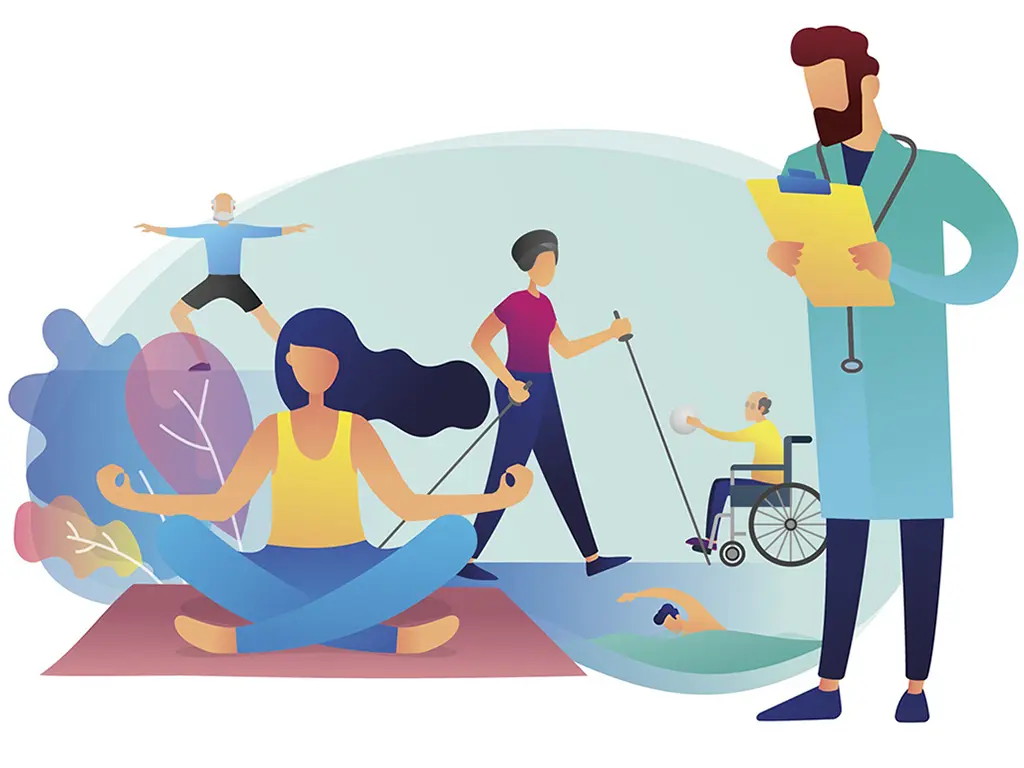Aging is a natural process, but it doesn’t have to lead to a rapid decline in health. Numerous scientific studies have shown that regular physical activity plays a crucial role in preventing age-related diseases and can even enhance life expectancy. In this blog, we will explore how exercise positively impacts the biological processes associated with aging and how it can be a true ally for a longer, healthier life.
1. Reducing the Risk of Age-Related Chronic Diseases
Cardiovascular diseases, type 2 diabetes, hypertension, and osteoarthritis are common conditions that increase with age. However, studies have shown that regular physical activity significantly reduces the risk of developing these diseases. Exercise helps maintain a healthy body weight, improves blood circulation, and strengthens the immune system.
The concrete benefits of exercise on heart health: Activities like brisk walking, running, or cycling improve cardiovascular endurance, lower blood pressure, and promote heart health. This substantially reduces the risk of heart attacks and strokes.
2. Preserving Muscle and Bone Mass
As we age, we lose muscle and bone mass, a phenomenon known as sarcopenia. This can make daily activities more challenging and increase the risk of fractures. However, resistance exercise (such as weightlifting) and activities that promote balance (like yoga) help maintain muscle mass and bone density.
Studies have demonstrated that strength training programs not only slow down muscle loss but also improve mobility and physical function in older adults. It also reduces the risk of falls, which are common among seniors.
3. Improving Cognitive Health
Aging is also associated with cognitive changes, with an increased risk of dementia and Alzheimer’s disease. However, recent research has proven that regular physical activity stimulates the production of neurotrophic factors—proteins that promote the growth of neurons and brain plasticity. As a result, older adults who exercise regularly show slower brain aging, with better memory, concentration, and executive functions.
Particularly, exercises like brain games, dancing, and even walking can stimulate different areas of the brain, enhancing brain connectivity.
4. Reducing Stress and Enhancing Mood
Aging is often accompanied by stress and mood changes. Physical exercise is an excellent way to release endorphins, natural hormones that promote well-being and help reduce symptoms of depression and anxiety. It has also been shown that exercise improves sleep quality, which is essential for cellular regeneration and body repair.
A regular physical activity routine can be beneficial for emotional well-being, especially in reducing social isolation, a major risk factor for depression in older adults.
5. Optimizing Longevity
The benefits of exercise on longevity are well-documented. A study by the World Health Organization revealed that older adults who stay active have a longer life expectancy than those who are sedentary. Exercise not only helps prevent chronic diseases but also enhances bodily functions that slow down with age.
The key is to engage in regular, moderate-to-intense activity combined with a healthy diet and balanced lifestyle. The goal is not necessarily to perform extreme exercises but to adopt a routine that promotes mobility, strength, and overall health.
6. Enhancing Mitochondrial Health and Function
In addition to the effects on muscle, bone, and brain health, exercise plays a vital role in the health of mitochondria—often referred to as the "powerhouses" of our cells. Mitochondria are responsible for producing energy in the form of ATP (adenosine triphosphate), and as we age, the efficiency of our mitochondria tends to decline, which contributes to fatigue, muscle weakness, and other age-related health issues.
Regular exercise, particularly aerobic activities such as walking, running, or cycling, has been shown to increase mitochondrial biogenesis (the production of new mitochondria) and improve their function. This not only helps combat fatigue but also enhances overall cellular energy production, enabling the body to perform better and recover faster from stressors.
Thus, exercise can play a key role in improving energy levels, reducing feelings of exhaustion, and promoting overall vitality as we age. By maintaining mitochondrial health, exercise helps us feel more energetic and resilient, even in older age.
5 Essential Biological Benefits of Physical Activity for Healthy Aging:
| Benefit | Description |
|---|---|
| 1. Improved Insulin Sensitivity | Exercise helps regulate blood sugar levels and improves the body's response to insulin, reducing the risk of type 2 diabetes. |
| 2. Improved Cognitive Health | Exercise stimulates the production of neurotrophins, supporting brain cell growth and slowing cognitive decline, reducing the risk of dementia. |
| 3. Enhanced Cardiovascular Function | Aerobic exercise improves blood circulation, lowers blood pressure, and strengthens heart health. |
| 4. Enhanced Mitochondrial Function | Exercise promotes mitochondrial biogenesis, increasing cellular energy production and reducing fatigue. |
| 5. Reduced Oxidative Stress | Physical activity helps reduce the accumulation of free radicals in the body, decreasing oxidative stress, a factor in cellular aging. |
Conclusion
Physical exercise is one of the most effective ways to counteract the effects of aging and prevent age-related diseases. In addition to its physical benefits, it is essential for maintaining optimal mental health and a high quality of life. By incorporating exercise into your daily routine, you can not only improve your current well-being but also promote a healthy and vibrant aging process.
